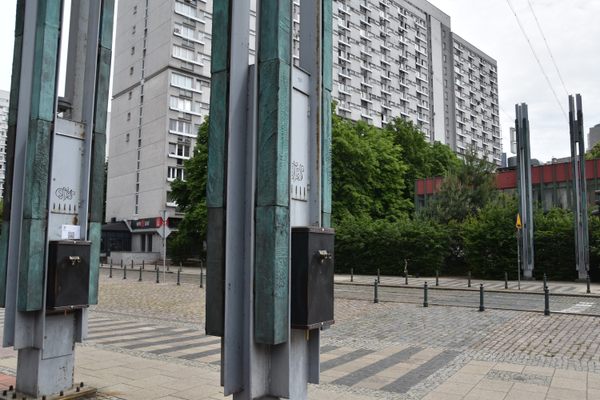AO Edited
The Monument Tree of Pawiak
A bronze replica of an elm tree that honors the victims that perished in Pawaik Prison.
Pawiak Prison was constructed in 1835. During the 1863 Uprising, it was pressed into use as a transfer camp for Polish citizens sentenced to deportation to Siberia.
Following the German invasion during World War II, Pawiak Prison became a Gestapo prison. During this period, approximately 100,000 people were imprisoned. Some 37,000 died on the premises, and another 60,000 were transferred to concentration camps.
A large number of Poland’s Jewish population also passed through Pawiak, however, the exact numbers are unknown as prison archives were never discovered. This was in large part because Pawaik Prison was destroyed in the 1944 Warsaw Uprising.
The prison took its name from the street on which it stood, ulica Pawia, which means “peacock” in Polish.
Outside the museum building stands what appears to be a large tree. Upon closer inspection, it is actually a bronze sculpture designed to represent an elm that once grew at the site.
The original tree actually survived the prison’s destruction in 1944 and became a place of remembrance where families placed obituary plaques for loved ones lost to the prison.
When the tree finally died, a decision was made to replace it with an artificial copy cast in bronze. This sculpture continues to serve as a place for obituaries, flowers are also left in remembrance of those who lost their lives. Victims’ families have placed epitaph plates on the elm tree since 1945, when the bronze tree was set up to replace the dead tree, the plaques were also moved.
Know Before You Go
The tree outside can be viewed for free but the museum is also well worth a visit, although it can be a bit sad.















Follow us on Twitter to get the latest on the world's hidden wonders.
Like us on Facebook to get the latest on the world's hidden wonders.
Follow us on Twitter Like us on Facebook